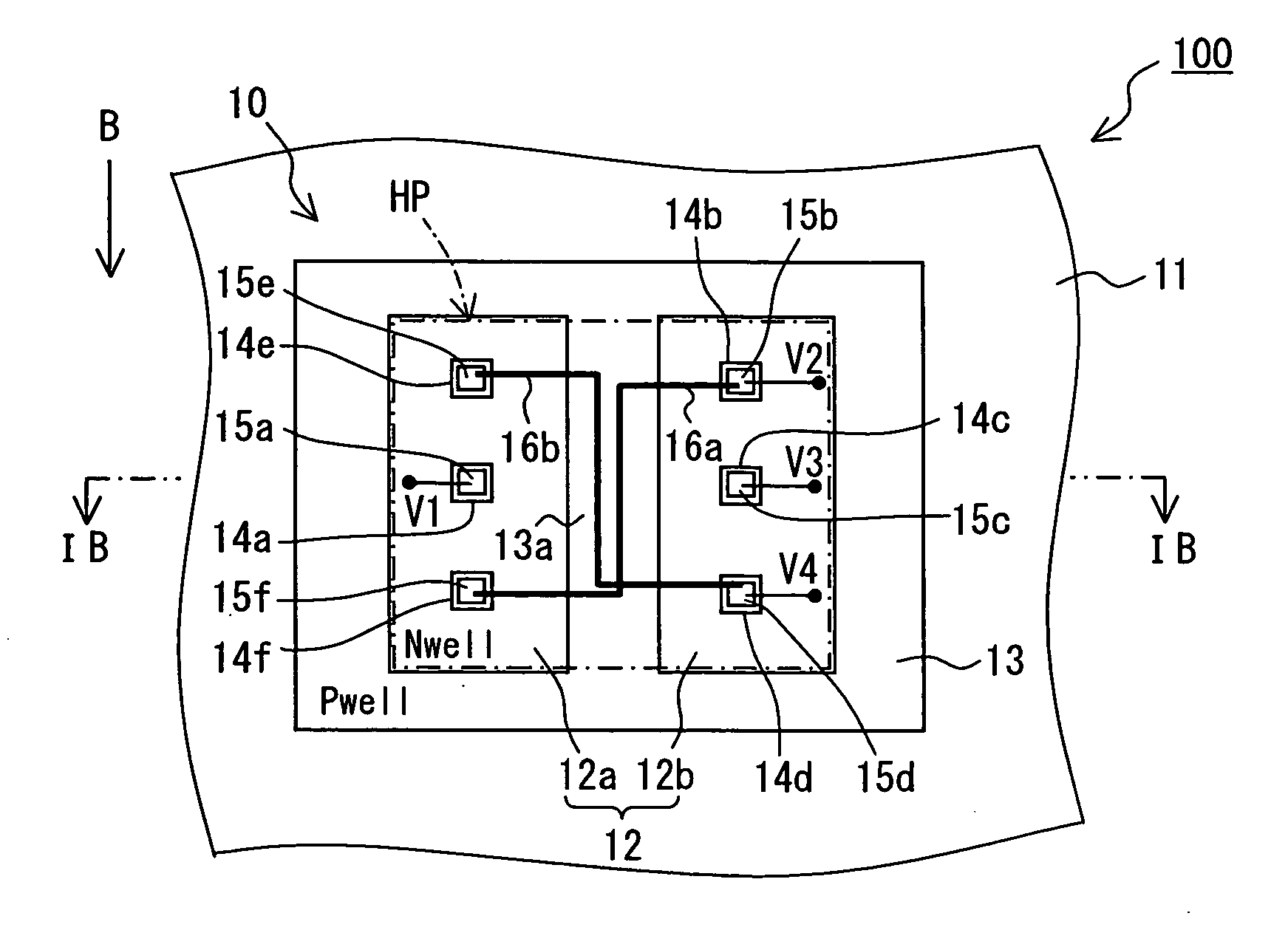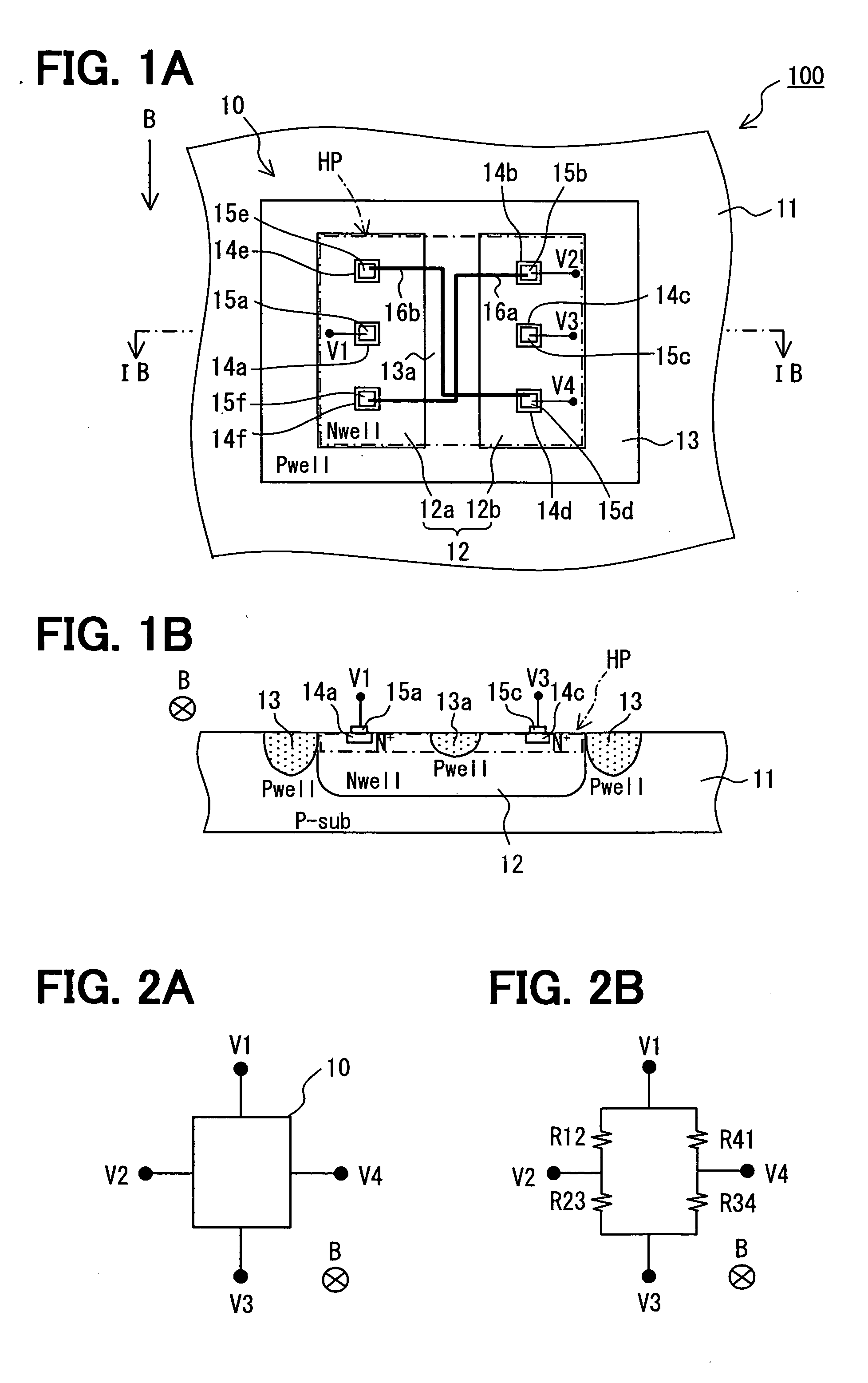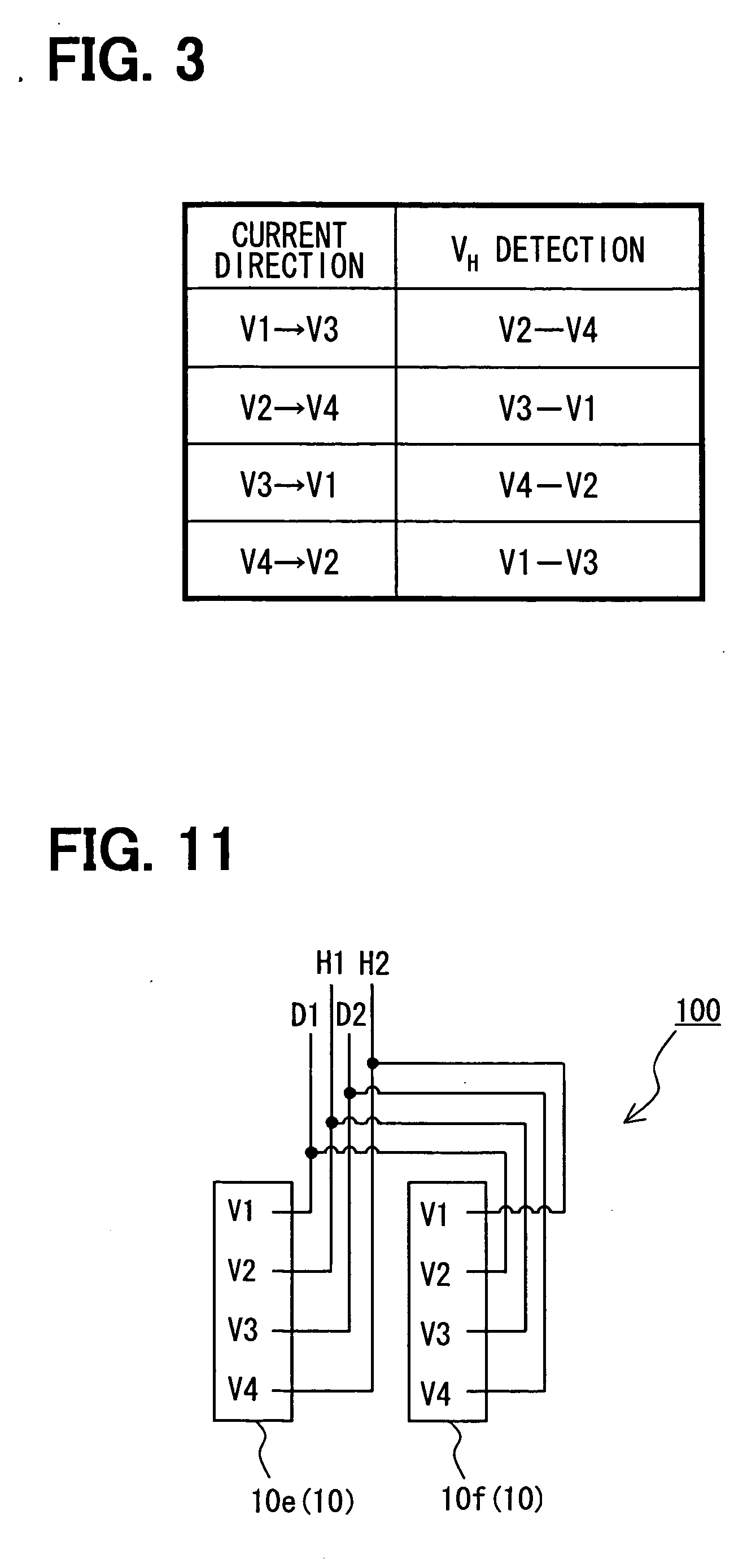Magnetic sensor and method for detecting magnetic field
a magnetic field and sensor technology, applied in the direction of galvano-magnetic devices, instruments, magnetic measurements, etc., can solve the problems of unbalance voltage and unbalance of electric potential distribution, and achieve the effect of reducing the offset voltage of the sensor
- Summary
- Abstract
- Description
- Claims
- Application Information
AI Technical Summary
Benefits of technology
Problems solved by technology
Method used
Image
Examples
first embodiment
Mode
[0045]FIGS. 1A and 1B are views showing the schematic construction of a magnetic sensor in accordance with a first embodiment mode, where FIG. 1A is a plan view and FIG. 1B is a cross-sectional view along line IB-IB of FIG. 1A.
[0046] As shown in FIGS. 1A and 1B, a magnetic sensor 100 in accordance with this embodiment mode is constructed by forming a Hall element 10 of a vertical type in a substrate (semiconductor substrate) 11 constructed by a single electric conductivity type. The Hall element 10 is formed by utilizing a CMOS process. The present applicant previously discloses JP-A-2005-333103 as the magnetic sensor 100 (vertical Hall element 10) of such a construction. Accordingly, characteristic portions of this embodiment mode will next be centrally explained.
[0047] For example, the Hall element 10 of the vertical type is constructed by arranging a silicon substrate (P-sub) of P-type as a substrate 11 having a (100)-plane as a cut face, and a semiconductor area (N-well) 1...
second embodiment
Mode
[0068] A second embodiment mode will next be explained on the basis of FIGS. 5A and 5B. FIGS. 5A and 5B are views showing the schematic construction of a magnetic sensor in accordance with the second embodiment mode, where FIG. 5A is a plan view and FIG. 5B is a cross-sectional view along line VB-VB of FIG. 5A.
[0069] The magnetic sensor in accordance with the second embodiment mode is common to the magnetic sensor 100 shown in the first embodiment mode in many portions.
[0070] In the magnetic sensor 100 in accordance with this embodiment mode, the Hall element 10 of the vertical type is formed by utilizing a bipolar process. The operation and driving mode of the magnetic sensor 100 are similar to those of the first embodiment mode.
[0071] As shown in FIGS. 5A, 5B, the substrate 11 is constructed by a semiconductor substrate 11a constructed by e.g., silicon of P-type (first electric conductivity type) and a semiconductor layer 11b constructed by silicon of N-type (second electri...
third embodiment
Mode
[0081] Next, a third embodiment mode will be explained on the basis of FIGS. 7A and 7B. FIGS. 7A and 7B are views showing the schematic construction of a magnetic sensor in accordance with the third embodiment mode, where FIG. 7A is a plan view and FIG. 7B is a cross-sectional view along line VIIB-VIIB of FIG. 7A.
[0082] The magnetic sensor in accordance with the third embodiment mode is common to the magnetic sensor 100 shown in the first and second embodiment modes in many portions.
[0083] As shown in FIGS. 7A and 7B, the magnetic sensor 100 in accordance with this embodiment mode basically approximately has the same structure as the magnetic sensor 100 shown in the first embodiment mode, and its operation mode is also set as mentioned above. In this embodiment mode, an electrode material 21 of a flat plate shape constructed by e.g., aluminum, polycrystal silicon, etc. is arranged on the substrate 11 through an insulating film 20 constructed by e.g., PSG, silicon oxide, etc. i...
PUM
 Login to View More
Login to View More Abstract
Description
Claims
Application Information
 Login to View More
Login to View More - R&D
- Intellectual Property
- Life Sciences
- Materials
- Tech Scout
- Unparalleled Data Quality
- Higher Quality Content
- 60% Fewer Hallucinations
Browse by: Latest US Patents, China's latest patents, Technical Efficacy Thesaurus, Application Domain, Technology Topic, Popular Technical Reports.
© 2025 PatSnap. All rights reserved.Legal|Privacy policy|Modern Slavery Act Transparency Statement|Sitemap|About US| Contact US: help@patsnap.com



